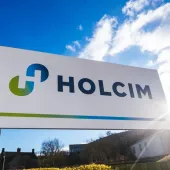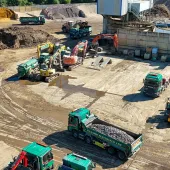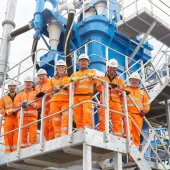Brett Aggregates working on major London redevelopment project

Construction materials firm to supply recycled materials to regeneration of Battersea Power Station
BRETT Aggregates are playing a key part in one of London’s most spectacular development projects – the restoration and regeneration of Battersea Power Station – that will see the iconic Grade II listed building and its surroundings transformed into a new residential area comprising over two million sq ft of retail/leisure outlets, offices, homes, cultural venues and 18 acres of public space.
Brett are working in close collaboration with the McGee Group, one of the contractors on the Battersea Power Station site given the task to excavate 400,000 tonnes of materials and to build a huge basement area.
All excavated material is transported by McGee to Brett’s Hithermoor facility in west London, where it is crushed and screened to produce recycled aggregates ready for use in the redevelopment project. The two companies are working together to ensure that this process is achieved with maximum efficiency and as few truck movements as possible in order to reduce their carbon footprint.
Phil Moroney, transport & landfill manager at McGee Group, commented: ‘We have developed a strong relationship with Brett over the years, working in close collaboration to deliver effective solutions at a number of prestigious contracts in London, including: Wimbledon Tennis; Heathrow Airport; and more recently Battersea Power Station.
‘It is important for McGee to minimize the amount of material sent to landfill and to run our lorries efficiently. Close collaboration with Brett has allowed us to maximize the amount of material that can be recycled and back-load trucks to the site which delivers efficient transportation.’
Daniel Haw, sales manager (London and Home Counties) for Brett Aggregates, added: ‘This really is a win-win situation with both parties benefitting from working together. We have achieved notable transport efficiencies, saving costs and helping to reduce the carbon footprint of this landmark project as a whole.’









